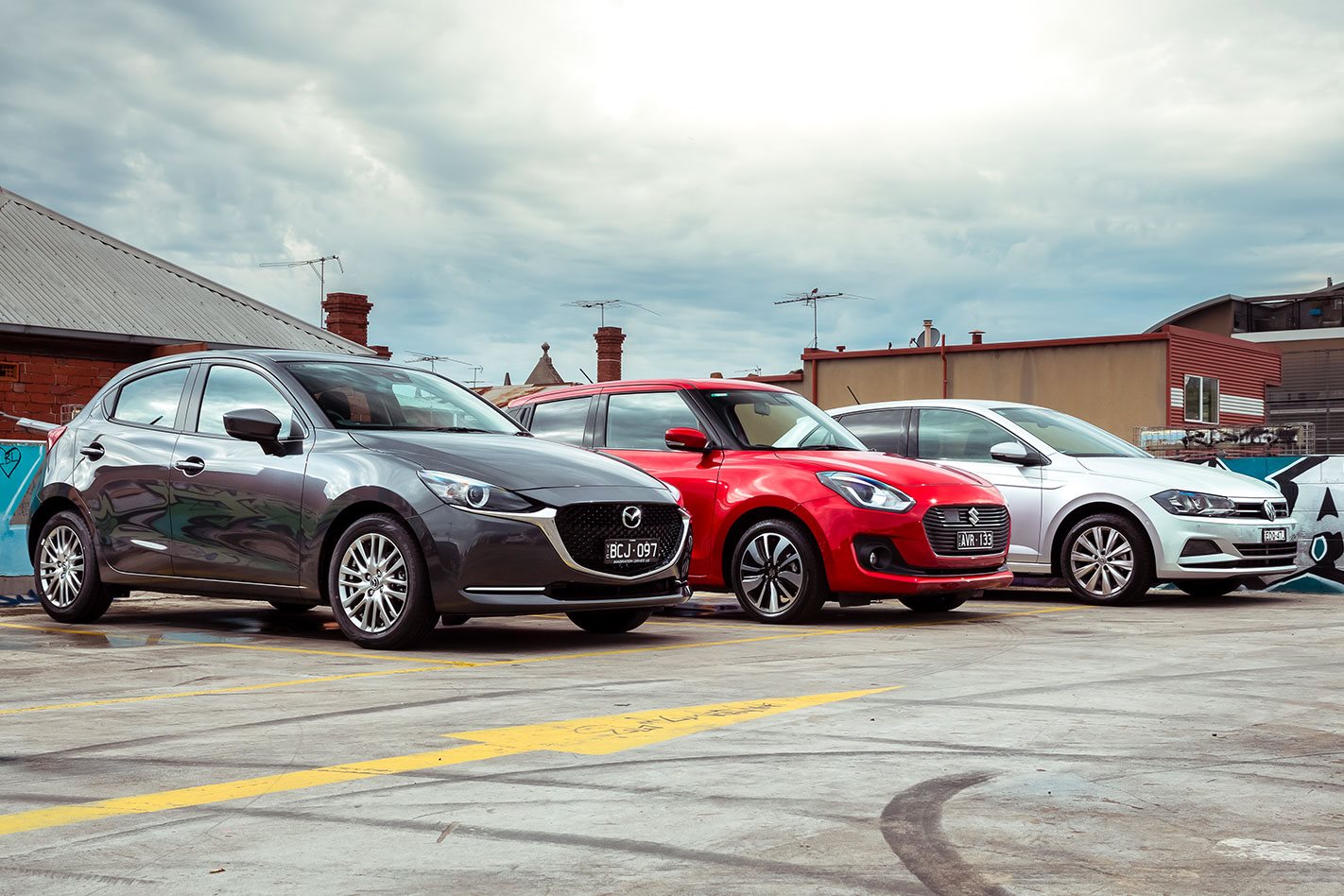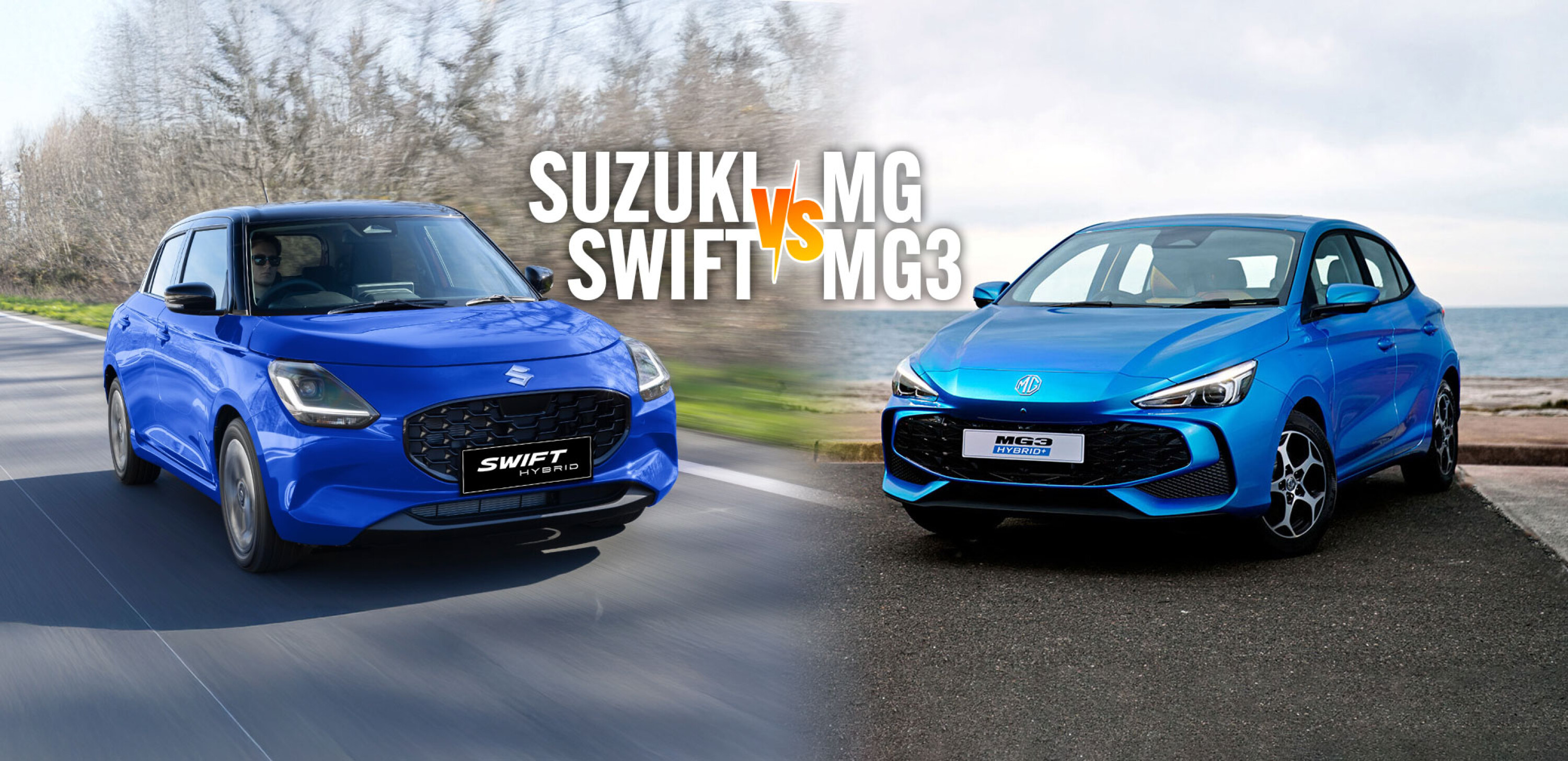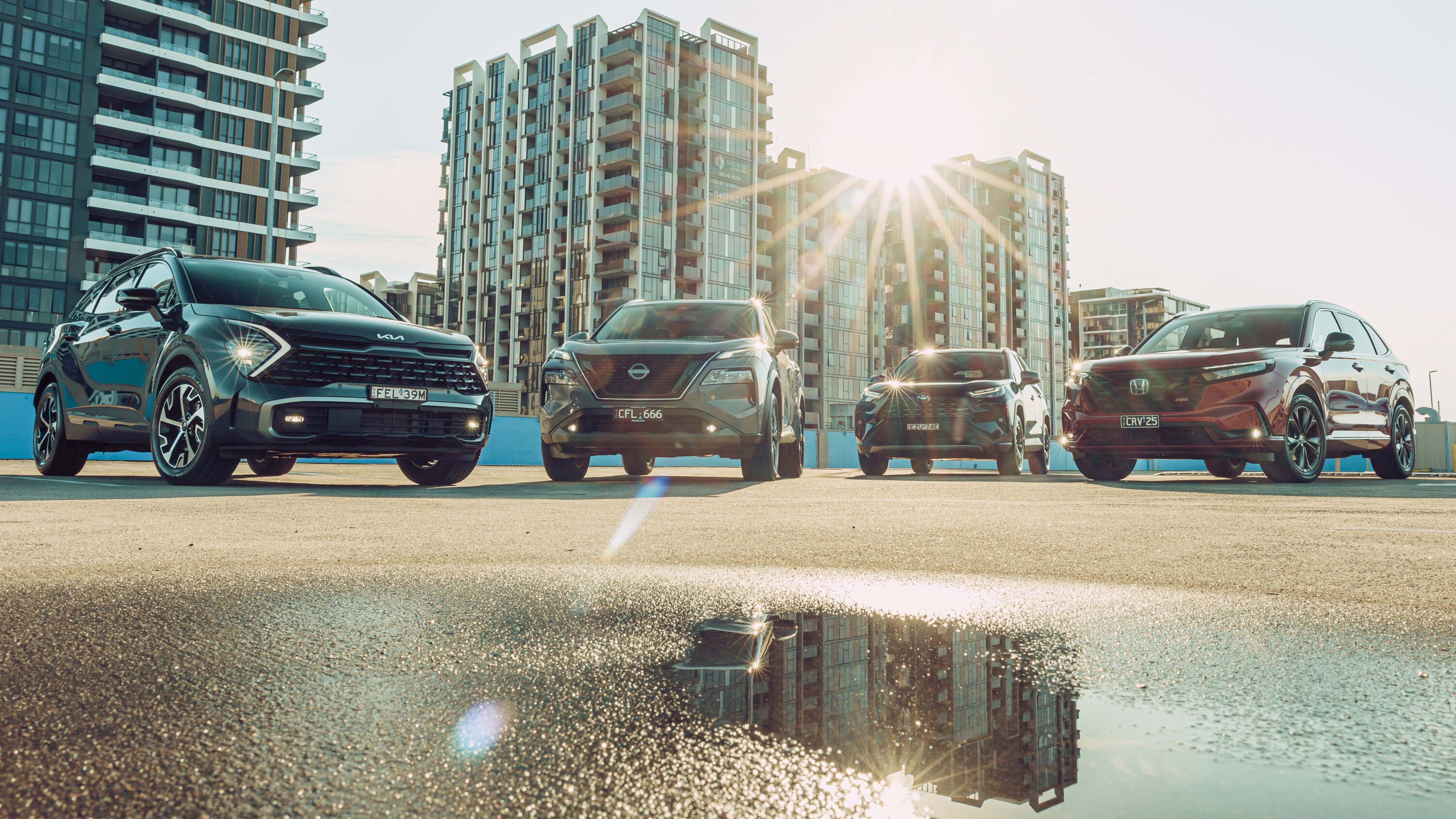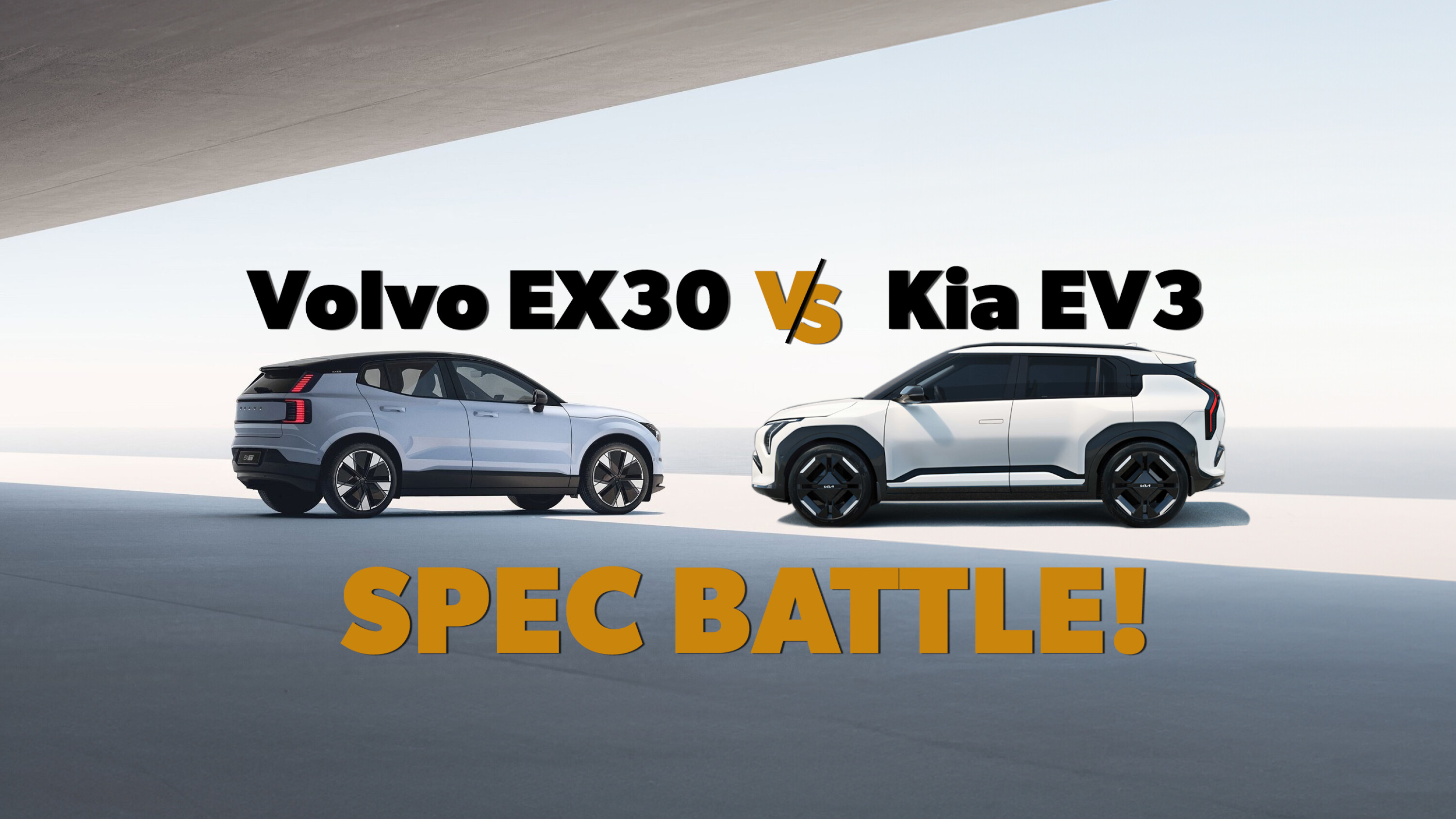When I grow up…” It’s a defiant line trotted out by kids when they realise an argument has reached a stalemate and they aren’t going to win. It’s a default retort out of frustration, as if their underdeveloped minds are trying to say “I’ll show you one day”. It’s a state of play that’s only resolved through hindsight and maturity. Essentially when we grow up.
The three assembled small hatches resemble that progression out of adolescence. They’re still among the tiniest tots of their respective families, but each asserts a newfound level of maturity with high spec levels and fully grown pricing.
That’s especially true of the freshly updated Mazda 2. It has been stuffed with extra kit and there are styling tweaks to the front and rear bumpers as well as the grille for a more mature design, but the fourth-generation 2 is pretty much the same as when it came out in 2014. And yet you will need at least $20,990 to get behind the wheel of the entry-level G15 Pure – or $24,490 for the G15 Evolve tested here. Considering that all the mechanicals transfer over virtually unchanged and the fact the previous base hatch was $15,570, it’s a big jump.
SUBSCRIBE to Wheels Magazine and save!

However, when it comes to the Suzuki Swift GLX Turbo you’re paying extra for the oily bits. It’s the only model in the Swift line-up to use the 1.0-litre three-cylinder BoosterJet engine, and it’s a little sweetheart worth paying for, even if it does bump the price up to $22,990. Extra goodies like rear disc brakes, auto LED projector headlights, four speakers, telescopic steering-wheel adjustment and digital climate control are added over the $18,990 GL Navigator safety pack.
It comes as no surprise, but the Volkswagen Polo Style is the most expensive. Even more so when you consider the $1500 Driver Assistance package and $600 metallic paint needs to be added to the $25,390 list price. That pack includes adaptive cruise, blindspot monitoring with rear traffic alert, park assist, city emergency braking and proactive occupant protection system.
Visually, Mazda has done its best to keep the 2 looking fresh. The exterior tweaks, like the extra bits of chrome and gaping grille, point to a more sophisticated design, as do the 16-inch alloys. But you could be forgiven for missing it as the updated DJ generation. The same could be said for inside, where the changes are incremental at best. Sadly, the new front seats are the least supportive and narrowest of the bunch, while there’s a dearth of premium materials to match the premium price – apart from the blue cow hide on the dash. After the likes of the next-gen 3 and CX-30, it’s hard not to feel a tad short-changed.
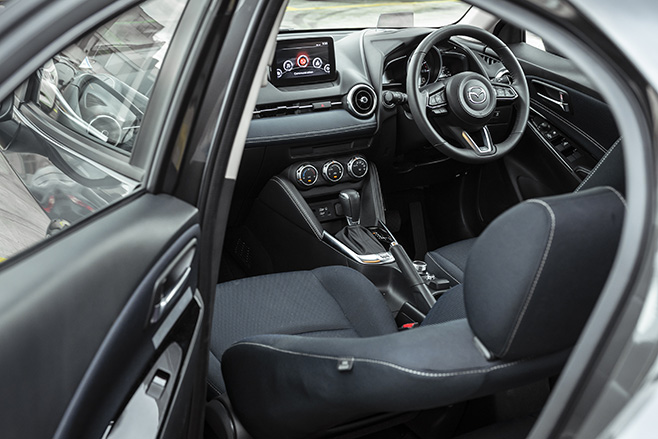
The Swift’s cabin is liberally plastered with hard, scratchy plastics. Concessions can be made for this because the GLX Turbo is based on a $16,990 runabout and it’s by far the lightest of this group. Like the Polo, the Swift has radar cruise, but then it doesn’t have rear parking sensors – strange. Lane departure warning is standard, but it has an annoying warning without the steering intervention offered in the Polo and 2.
In terms of feel-good factor, the Polo has this group licked. The upmarket ambience is undeniable, with soft-touch materials and an overt feeling of solidity shining through. Ergonomics are well sorted – you won’t be accidentally selecting Manual mode instead of Drive like in the Swift – and there is a sense of cohesion to the form and function.
Despite having the longest wheelbase of the three, the Mazda 2 is the shortest on rear-seat legroom. The poor packaging continues, as the rising beltline and tapered roofline creates the least headroom, with visibility in the back also hampered. None of these cars has rear air vents, but the general ambience for second-row passengers in the 2 is a bit gloomy. At 250 litres, the boot is comparatively meagre too when you consider that the 4065mm overall length is respectively 12mm and 225mm more than the Polo and Swift.
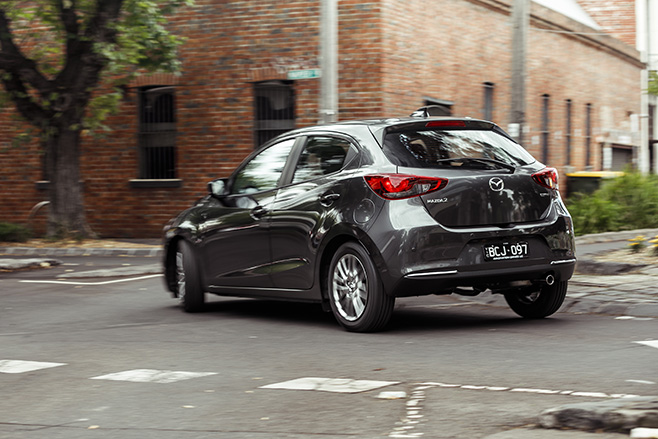
Conversely, the Swift is a packaging delight, its diminutive dimensions still providing almost the best rear-seat comfort in terms of leg- and headroom. There are map pockets and a general airy atmosphere compared to the confines of the 2. However, you can’t take and take without consequences; that Tardis-like cabin results in a boot with a rather miserly 242-litre capacity. Credit must be given for the underfloor spare (the Mazda and VW have them too), but the Swift would struggle swallowing the weekly shop let alone a driving holiday.
Thanks to its bigger footprint, the Polo wins the space race. Not only does it generate the most rear room, but the sculpted back bench, centre armrest and dual USB ports make it the most enjoyable rear of the three. A C-pillar three-quarter window also aids over-the-shoulder visibility. For this class, the cargo capacity is capacious; at 351 litres, you’re going to be able to fit a lot more gear in the VW than its competition.
Nestled up front in the Mazda is the carryover 1.5-litre four-cylinder petrol, which has been tickled, ever so slightly, to 82kW at 6000rpm and 144Nm at 4000rpm. Unlike its counterparts, the SkyActiv-G unit has no forced induction, which means it can’t rely on a surfeit of torque to shift its 1070kg. The 2 requires revs as it searches for power, rendering the six-speed auto rather restless. Hence its tested 0-100km/h time of 10.5sec is the slowest, as is its 80-120km/h result of 7.6sec. That means highway overtakes need more forward planning, and under hard provocation the engine sounds raucous at best. The 2 claws some ground back by being as efficient as the Polo (6.8L/100km test average), but neither usurp the frugal Swift (6.1L/100km).
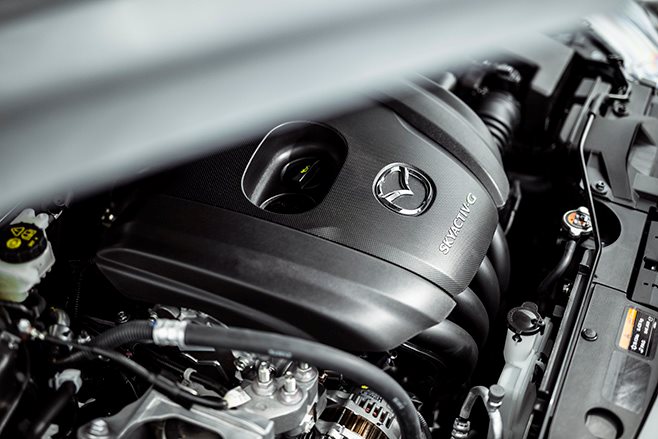
Performance is relative, and in this company the GLX Turbo shines on paper and in practice. The BoosterJet three-cylinder turbo engine might be tiny, but it uses all of its 998cc to great effect, with 82kW at 5500rpm and 160Nm between 1500 and 4000rpm. Thanks to a lissom 945kg kerb weight, the Swift is the quickest to 100km/h, scampering to the target in 10.2sec. It also has far more mid-range kick than the Mazda and even the boosted Polo, with the best 80-120km/h time of 6.8sec backing up the seat-of-the-pants impression. It sounds cool too, with an offbeat thrum that, believe it or not, has flat-six Porsche tones littered throughout its soundtrack. Not something you expect from a small hatch.
Despite touting the best outputs – 85kW between 5000 and 5500rpm and 200Nm from 2000 to 3500rpm – the VW is only second-quickest to 100km/h. That’s thanks to the Polo’s weakest link, the seven-speed dual-clutch transmission. Yes, the DSG changes rapidly on the run (both up and down ratios), but when puttering around it can be slow and indecisive. It simply can’t match either torque-converter autos for obedience. Still, thanks to the healthy Newton count, the Polo is sprightly on the run and, like the Swift, has a charming engine tune, although it is a little more hushed.
Which means it’s surprising to discover that the Polo isn’t the quietest in the cabin out on the open road. Testing each car at 80km/h on the same road with the reader placed in the same location revealed that the Mazda 2 offers the most serene cabin at 70.4dB, only just edging out the VW’s 70.5dB effort. This backs up the impressive results found in the Mazda 3 at Car of the Year 2020. Mazda has transformed the NVH that were previously an Achilles heel of the marque. Finally, the cost-cutting at Suzuki reveals itself in the sound deadening, or lack thereof, with the Swift coming in at 74.9dB.
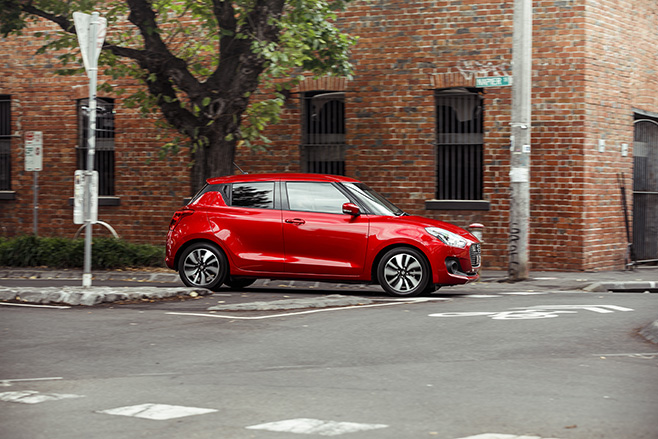
Dynamically, the 2 remains adept, with its torsion beam rear suspension (all three use the same) and MacPherson struts up front returning a settled persona. The ride quality is firm but not harsh, while rough roads are dealt with handily. The steering is slightly sticky on-centre, but it frees up when lock is applied, and has a nice hefty feel. One sore point is the braking, with the 2 recording the longest stop from 100km/h at 40.4m (Swift 39.6m; Polo 36.1m). In 2020, Mazda really should have disc brakes on all four corners – rear drums just don’t cut it. The 2 is competent, but just lacks that final veneer of Polo polish and the verve that permeates the Swift.
With a small on-scale figure and a powertrain that punches above its weight, the Suzuki feels peppy and light on its feet. Of the three, it’s the GLX Turbo that wants you to drive with a bit of cheek. However, it doesn’t deal with poor surfaces well, skipping and hopping over bumps, with big hits heard in the cabin. The steering also translates bumps in the road by way of intrusive kickback. Still, there’s something about how the Swift goes about its business that is very endearing. It’s the kid who acts up, but knows how to charm its way into forgiveness.
The Polo adds a layer of sophistication to both ride and handling. It is the most comfortable and confidence-inspiring, with a ride quality that displays a higher level of control and damper refinement. Occupants are far more cocooned in the cabin, and the suspension s more supple. The wider footprint and better tyres aid cornering grip, and while the Polo might not exude fun, it’s the most pleasing and rounded experience – like an older head on younger shoulders. The steering also offers the best weighting and most natural feel.
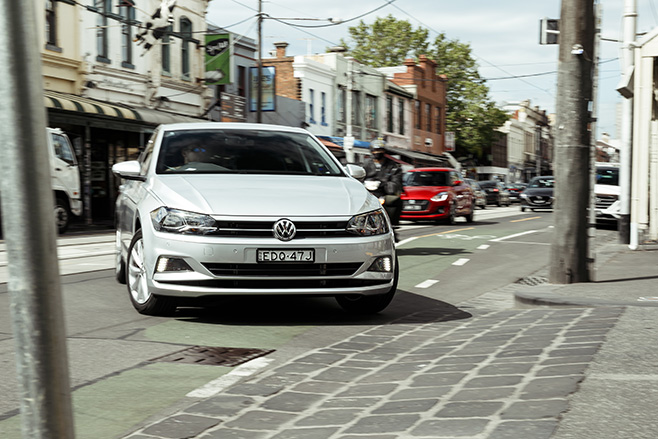
When it comes to deciphering a pecking order, the Mazda 2 falls to the bottom of this trio. The latest update sees it priced similarly to the Polo, but it doesn’t feel like an almost $25K car. Mazda is currently doing so many things well with its next-gen cars, but right now the 2 is a not-so-shiny beacon of the past. An all-new generation can’t come soon enough.
You could place the Suzuki in the same boat in regard to its interior. However, there’s a loveable nature to the GLX Turbo that’s lacking in the 2. And it must also be noted that the Swift is virtually batting above its average here, but was added to the field due to a previous comparison win. While you’re essentially paying a premium for a gem of an engine, whether or not buyers see worth in this is the real question. We do.
But the Polo’s win here is decisive. There’s real daylight between first and second. At $25K for the Style variant, this Polo is Golf money, but then it’s pretty much all the Volkswagen hatchback you’ll ever need. It looks and feels premium while offering abundant practicality on its bigger footprint. Out of all the small hatches, it’s the Polo that has truly grown up. And it’s certainly showing everyone how to do it.
TECH TALK
Each small hatch comes with a colour infotainment display with Apple CarPlay/Android Auto, but not all are equal. The Mazda 2’s 7.0-inch screen (top) isn’t touch-enabled, but it does offer Stitcher and Aha internet radio. The Swift (centre) also uses a 7.0-inch display but it requires precise inputs. Best in class is the Polo (lower); its 8.0-inch touchscreen is the most responsive and easy to use. Its only letdown is the sat-nav graphics.
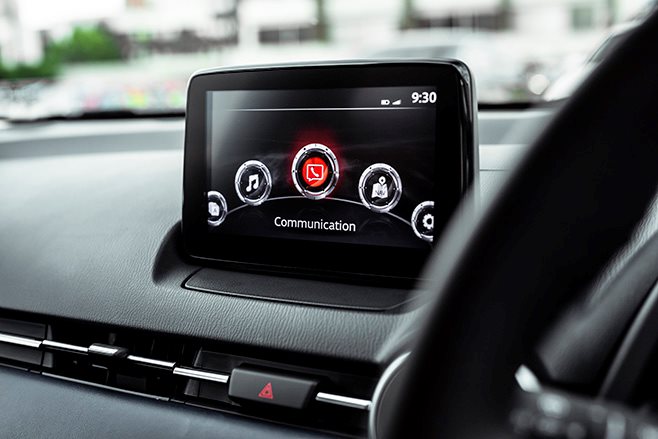
REAR ROOM
Polo is the pick for ferrying adult-sized occupants. With the widest door aperture and rear-seat head/legroom, the VW caters best for passengers and baby seats. The Swift gains an honourable mention.
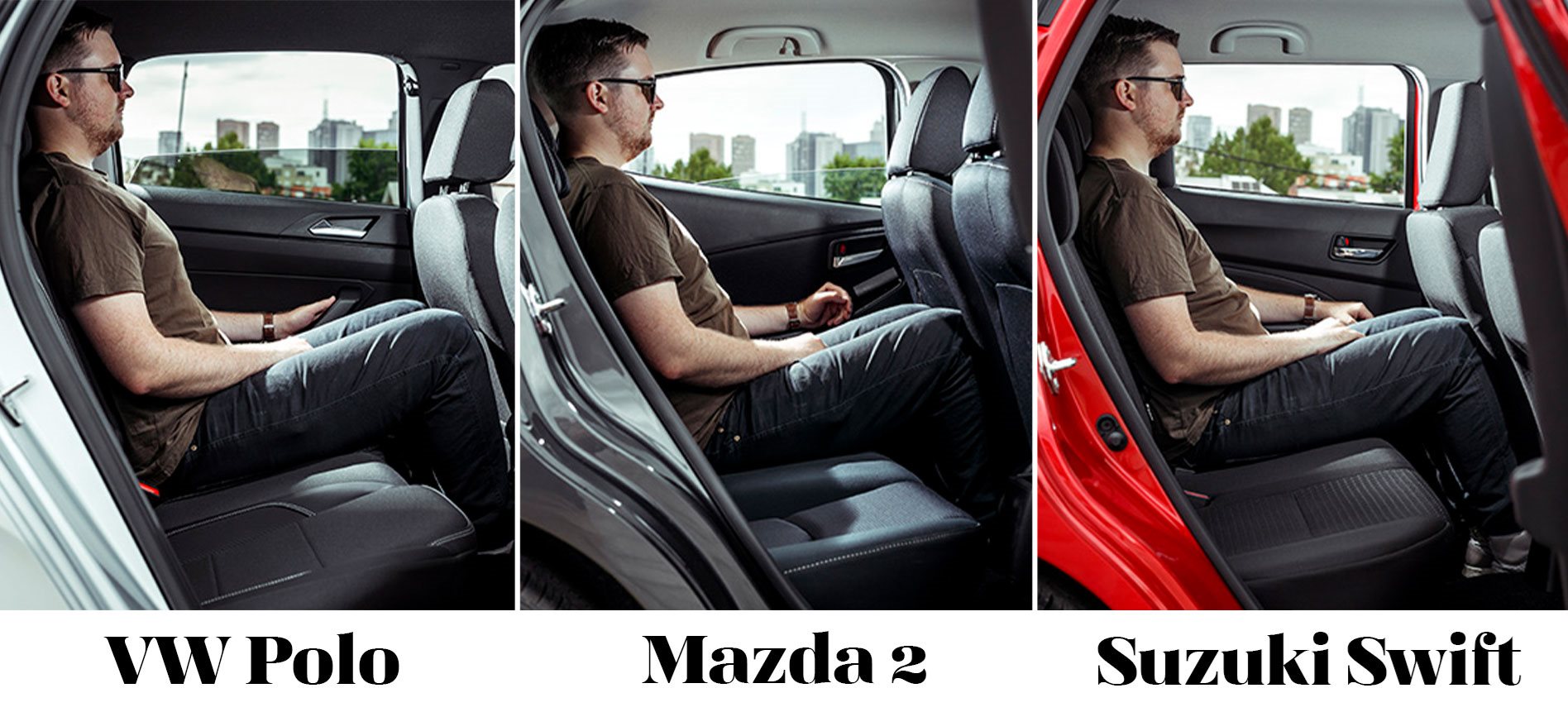
THREE CARS, THREE THINGS
1. Line Of Sight: A clear view out isn’t an issue, as the A- and C-pillars don’t intrude on vision too much. The low beltline aids visibility in the back, and there’s next to no rear three-quarter blindspot.
2. Old School: Despite an appealing instrument cluster design, the Swift is the only hatch here without a digital speedo. Seen as naff in an XF Fairmont Ghia, it’s now commonplace instrumentation.
3. My Humps: A flat floor is a bit too much to ask with boots this small. So all three have a noticeable hump when the rear seats are folded. Forgiveable given that all have spare wheels.
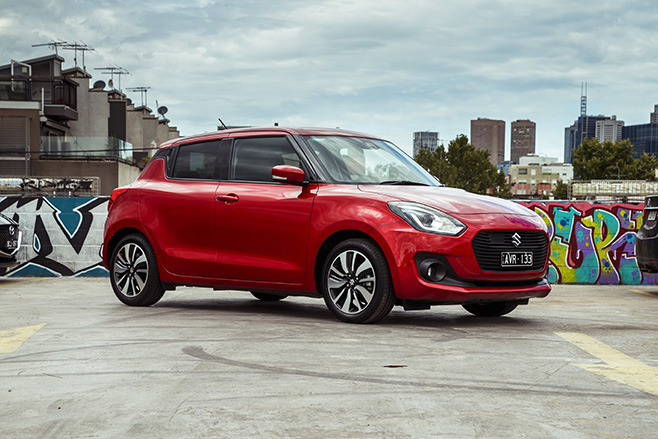
1. Heads Up: The Mazda 2 might be the only contender with a head-up display, but it’s a dinky little screen that pops up out of the dash. It isn’t as classy as the system used in the Mazda 3.
2. Steer Clear: While all three of these hatches have multifunction steering wheels (and the Polo has the most tactile leather), the 2’s button arrangement is clean and simple to use.
3. Handy Knobs: Despite the MZD Connect’s screen lacking touch capability, the control wheel located next to the handbrake is intuitive. There’s a volume knob and buttons for the home screen.
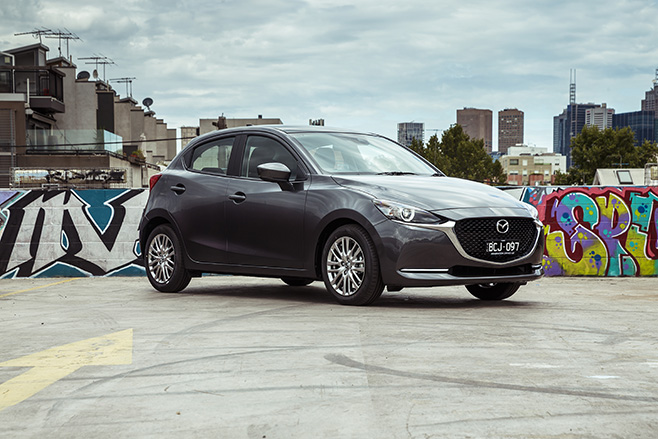
1. Razzle Dazzle: VW calls it an Active Info display, but it’s simply a different version of Audi’s Virtual Cockpit. The digital display is 10.25 inches and offers crisp and configurable readouts.
2. Disc Jockey: The Polo Style is essentially a rebranding of the Beats edition. That means it’s endowed with the same 300-watt Beats by Dre stereo and keeps the VW ‘down with the kids’.
3. Cool Runnings: If your personal thermostat runs to a different level, the Polo’s dual-zone climate control is a boon. With a digital display, it also fits in with the sophisticated, ergonomic cabin.
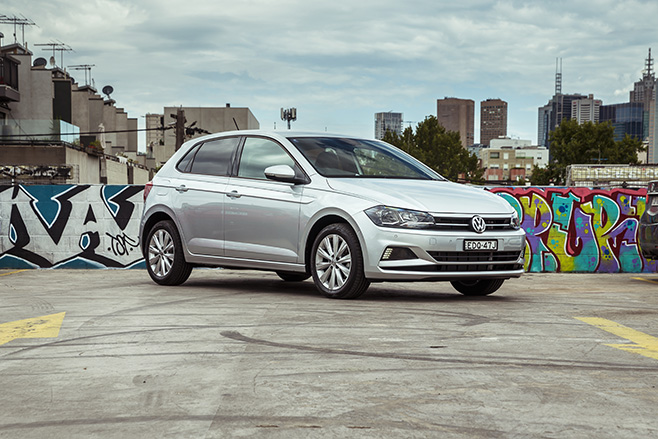
Compact hatchback specifications and pricing
u00a0 | Volkswagen Polo Style | Suzuki Swift GLX Turbo | Mazda 2 G15 Evolve |
u00a0Price | $25,390/Tested $27,490* | $22,990/Tested $22,990 | $24,990/Tested $25,485* |
u00a0 | * Driver Assistance package: | u00a0 | * Premium paint ($495) |
u00a0 | Drivetrain | u00a0 | u00a0 |
Engine | in-line 3cyl, dohc, 12v, turbo | in-line 3cyl, dohc, 12v, turbo | in-line 4cyl, dohc, 16v |
Layout | front engine (east-west), front drive | front engine (east-west), front drive | front engine (east-west), front drive |
Capacity | 999cc | 998cc | 1496cc |
Power | 85kW @ 5000-5500rpm | 82kW @ 5500rpm | 82kW @ 6000rpm |
Torque | 200Nm @ 2000-3500rpm | 160Nm @ 1500-4000rpm | 144Nm @ 4000rpm |
Gearbox | 7-speed dual-clutch | 6-speed automatic | 6-speed automatic |
u00a0 | Chassis | u00a0 | u00a0 |
Body | steel, 5 doors, 5 seats | steel, 5 doors, 5 seats | steel, 5 doors, 5 seats |
L/W/H/Wu2013B | 4053/1751/1446/2548mm | 3840/1735/1495/2450mm | 4065/1695/1495/2570mm |
Track (F/R) | 1521/1501mm | 1520/1525mm | 1495/1485mm |
Weight | 1152kg | 945kg | 1070kg |
Boot | 351 litres | 242 litres | 250 litres |
Fuel/tank | 95 octane/40 litres | 95 octane/37 litres | 91 octane/44 litres |
Economy | 6.8L/100km (test average) | 6.1L/100km (test average) | 6.8L/100km (test average) |
Suspension | Front: struts, A-arms, anti-roll bar | Front: struts, A-arms, anti-roll bar | Front: struts, A-arms, anti-roll bar |
Steering u00a0 | electric rack-and-pinion | electric rack-and-pinion | electric rack-and-pinion |
Turn circle | 10.6m (2.6 turns lock-to-lock) | 9.6m (3.2 turns lock-to-lock) | 9.8m (2.9 turns lock-to-lock) |
Front brakes u00a0 | ventilated discs (276mm) | ventilated discs (252mm) | ventilated discs (258mm) |
Rear brakes | solid discs (230mm) | solid discs (228mm) | drum (200mm) |
Tyres u00a0 | Falken Ziex ZE914 | Bridgestone Ecopia EP150 | Dunlop Enasave EC300+ |
Tyre size | 195/55R16 | 185/55R16 | 185/60R16 |
u00a0 | Safety | u00a0 | u00a0 |
ANCAP rating | ***** (Aus) | ***** (Aus) | ***** (Aus) |
u00a0 | Performance | u00a0 | u00a0 |
u00a0 | Power-to-weight: 74kW per tonne u00a0 | Power-to-weight: 87kW per tonne u00a0 | Power-to-weight: 77kW per tonne |
u00a0 | Redline/cut-out: 6600/6000rpm | Redline/cut-out: 6250/5700rpm | Redline/cut-out: 6500/6700rpm |
u00a0 | Speed at indicated 100km/h: 96 | Speed at indicated 100km/h: 97 | Speed at indicated 100km/h: 98 |
u00a0 | Standing-start acceleration | Standing-start acceleration | Standing-start acceleration |
u00a0 | 0-20km/h: 1.4sec | 0-20km/h: 1.2sec | 0-20km/h: 1.2sec |
u00a0 | 0-40km/h: 2.9sec | 0-40km/h: 2.6sec | 0-40km/h: 2.6sec |
u00a0 | 0-60km/h: 4.8sec | 0-60km/h: 4.6sec | 0-60km/h: 4.6sec |
u00a0 | 0-80km/h: 7.2sec | 0-80km/h: 7.1sec | 0-80km/h: 7.0sec |
u00a0 | 0-100km/h: 10.3sec | 0-100km/h: 10.2sec | 0-100km/h: 10.5sec |
u00a0 | 0-120km/h: 14.6sec | 0-120km/h: 13.9sec | 0-120km/h: 14.6sec |
u00a0 | 0-140km/h: 20.8sec | 0-140km/h: 19.8sec | 0-140km/h: 21.3sec |
u00a0 | 0-400m: 17.5sec @ 131.8km/h | 0-400m: 17.3sec @ 132.3km/h | 0-400m: 17.3sec @ 129.8km/h |
u00a0 | Rolling acceleration | Rolling acceleration | Rolling acceleration |
u00a0 | 80-120km/h: 7.4sec | 80-120km/h: 6.8sec | 80-120km/h: 7.6sec |
u00a0 | Braking distance | Braking distance | Braking distance |
u00a0 | 100km/h-0: 36.1m | 100km/h-0: 39.6m | 100km/h-0: 40.4m |
Verdict | 8.5/10 | 7.0/10 | 7.0/10 |
u00a0 | Track: Heathcote Raceway, fine. | Track: Heathcote Raceway, fine. | Track: Heathcote Raceway, fine. |
u00a0 | Warranty: 5yr/unlimited km. | Warranty: 5yr/unlimited km. | Warranty: 5yr/unlimited km. |


